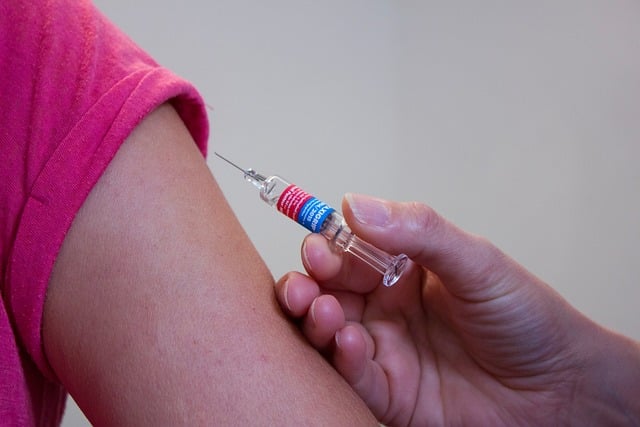A clinical trial led by Emory University researchers has demonstrated that a twice-yearly injection could transform HIV prevention, offering 96% greater protection compared to the current standard of care. The study represents a significant advancement in making HIV prevention more accessible to communities most impacted by the virus.
Published in New England Journal of Medicine | Estimated reading time: 5 minutes
In a comprehensive Phase 3 clinical trial spanning multiple countries, researchers found that Lenacapavir, administered as an injection every 26 weeks, dramatically reduced HIV infection rates compared to daily oral medications. The study, which included 3,265 participants across 88 sites globally, showed remarkable results: only two participants in the Lenacapavir group contracted HIV, compared to nine in the control group taking daily oral medication.
The double-blind, randomized trial, funded by Gilead Sciences, assigned participants in a 2:1 ratio to receive either subcutaneous Lenacapavir every 26 weeks or daily oral emtricitabine-tenofovir disoproxil fumarate (F/TDF). The results were striking: the Lenacapavir group experienced an HIV infection rate of just 0.10 per 100 person-years, compared to 0.93 per 100 person-years in the F/TDF group. When compared to the background HIV incidence in the screened population of 2.37 per 100 person-years, the effectiveness becomes even more apparent.
Dr. Colleen Kelley, lead author and professor at Emory University’s School of Medicine, emphasizes that these findings represent a profound advancement in medicine. The near 100% efficacy rate is particularly significant for individuals who face challenges with daily oral medication regimens. As co-director of the Emory Center for AIDS Research and Associate Dean for Research for Emory at Grady, Dr. Kelley’s perspective carries significant weight in the field.
The study directly addresses one of the most persistent challenges in HIV prevention: medication adherence. Current prevention methods require daily oral medication, which can be difficult to maintain consistently. Research shows that approximately half of individuals who begin daily oral PrEP discontinue within a year due to various factors, including healthcare access barriers. The introduction of a twice-yearly injectable option could significantly improve adherence rates and, consequently, prevention effectiveness.
The trial’s diversity and inclusion efforts were particularly noteworthy. Dr. Valeria Cantos, associate professor at Emory University’s School of Medicine and principal investigator at the Grady research site, emphasized their commitment to representing underserved populations. The study included participants from Peru, Brazil, Argentina, Mexico, South Africa, Thailand, and the United States, with materials provided in multiple languages and bilingual staff at various sites. This inclusive approach was crucial, as the same populations disproportionately impacted by HIV often face limited access to PrEP.
Recent statistics underscore the urgency of these findings. In 2022, over half of new HIV infections in the United States occurred among cisgender gay men, with 70% affecting Black or Hispanic individuals. The development of a twice-yearly injectable option could help address these disparities by removing daily adherence barriers and reducing the frequency of healthcare visits from every three months to twice yearly.
The safety profile of Lenacapavir also proved promising during the trial. While some participants experienced injection-site reactions – leading to discontinuation in 1.2% of the Lenacapavir group compared to 0.3% in the F/TDF group – no major safety concerns were identified. Dr. Carlos del Rio, chair of the Department of Medicine at Emory University School of Medicine, emphasizes that while these results are promising, the true challenge lies in ensuring equitable access to these new prevention tools.
With the Phase III clinical trial now complete and under FDA consideration, researchers are optimistic about potential approval by 2025. This development could mark a significant turning point in HIV prevention efforts, particularly for communities most vulnerable to infection.
Glossary
- PrEP (Pre-exposure prophylaxis): Medication taken to prevent HIV infection before exposure to the virus
- Lenacapavir: A long-acting injectable medication administered twice yearly for HIV prevention
- Phase 3 Clinical Trial: Large-scale testing of a medical treatment’s effectiveness and safety in human subjects
Test Your Knowledge
How often must Lenacapavir be administered for HIV prevention?
Lenacapavir is administered every 26 weeks (twice yearly) via subcutaneous injection.
What percentage of participants in the Lenacapavir group remained HIV-negative during the trial?
99% of participants in the Lenacapavir group did not acquire an HIV infection during the trial.
How does the efficacy of Lenacapavir compare to the background HIV incidence in the screened population?
The incidence rate ratio was 0.04 (95% CI, 0.01 to 0.18), representing a 96% reduction in HIV infection risk compared to the background incidence.
What were the comparative infection rates between the Lenacapavir and F/TDF groups in terms of infections per 100 person-years?
The Lenacapavir group had 0.10 infections per 100 person-years compared to 0.93 per 100 person-years in the F/TDF group.
Enjoy this story? Subscribe to our newsletter at scienceblog.substack.com.
If our reporting has informed or inspired you, please consider making a donation. Every contribution, no matter the size, empowers us to continue delivering accurate, engaging, and trustworthy science and medical news. Independent journalism requires time, effort, and resources—your support ensures we can keep uncovering the stories that matter most to you.
Join us in making knowledge accessible and impactful. Thank you for standing with us!

